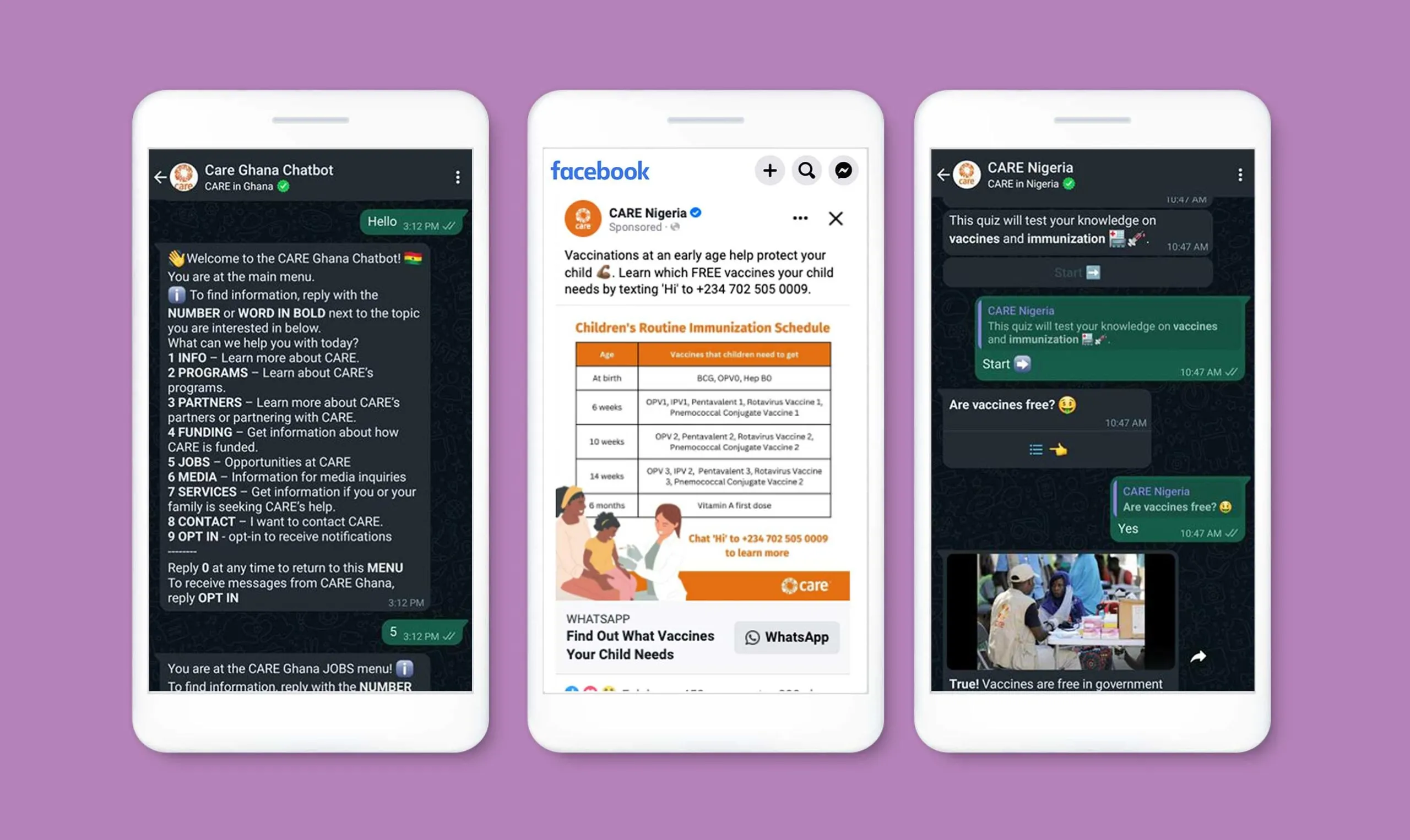In August of 2021, CARE built and launched its first chatbot in a record four days to respond to and support current and former CARE Afghanistan employees struggling in the wake of the United States’ departure from Afghanistan. Since then, CARE continues to experiment with using chat for impact.
CARE, in partnership with Meta, envisioned a project that would leverage CARE chatbots on WhatsApp as a way to support positive public health outcomes in two country offices, CARE Bangladesh and CARE Nigeria. The objective was to measure the effect of supplementing the country offices’ pre-existing in-person programming promoting early childhood immunization with chatbot interventions.
Throughout 2022, CARE Bangladesh and CARE Nigeria worked on content development and testing, learned to use Turn.io‘s platform to build and manage the chatbots, and developed Facebook ad campaigns to promote chatbot awareness and adoption.
TL;DR?
- In 2022, CARE decided to develop chatbots on WhatsApp to support CARE Bangladesh and CARE Nigeria’s programs promoting immunization against infectious diseases. The chatbots were launched and promoted from December 2022 to February 2023.
- CARE learned numerous important lessons about chatbot logistics, developing content, chatbot building, as well as launching and promoting the service.
- Key learnings included setting a realistic timeline, budgeting generously for planning the chatbot content and communications flow, and building a sustainable organizational structure around chatbot management.
This project took a lot longer than we expected. It seemed as though everything that could go wrong, did go wrong. The wonderful part about that is that it taught the CARE team many lessons. What follows are steps CARE will take next time. We hope they serve as helpful tips for other INGOs in the sector experimenting with chatbots on WhatsApp for program impact.







